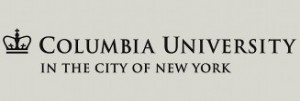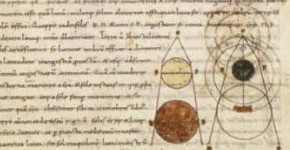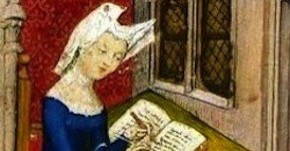-
Main Elements
Manuscripts will be submitted to Lucy Randall at [email protected]. Chapters and Reflections should be submitted as individual files in Word in Times New Roman, 12-point font, double-spaced, with one-inch margins. They should employ US style and punctuation for the sake of consistency throughout the volume. Contributors should please stay within the word count limit stated on their contributor agreements.
Contributor Biography: Each contributor will need to send the responsible volume editor a brief biography of about 50 words to include in the front matter of the volume. Volume editors will be tasked with compiling these in alphabetical order and sending them to OUP with the manuscript files.
Table of Contents: Because OPC books will be part of Oxford Scholarship Online (OSO), it is important that each and every chapter be linked to the main concept of the book when people use the search function on the OSO site, so each chapter should contain the concept in its title. For example, each chapter in the Sympathy volume includes ‘sympathy’ in its title. Titles should be kept rather simple, but the editor will ultimately decide on what is appropriate. See Tables of Contents in the books already published here. Chapters will be numbered, though Reflections will not be. They will appear in the Table of Contents without numbers, but with titles like Reflection: Eternity in Music (in the Eternity volume).
Abstracts and Key Words: For use in cataloging OSO and not in the published volumes themselves, contributors are required to submit an abstract of about 150 words and 5-10 key words for their chapters. When writing these, please make sure to compose abstracts in the third person. Volume editors, in addition to submitting an abstract of 150 words or fewer and 5-10 keywords for their introductions, must submit an abstract of 250 words or fewer summarizing the entire volume and 5-10 keywords that convey the main ideas of the volume as a whole. If you need further guidance on writing abstracts and keywords, contact Lucy Randall (email above).
Chapters will be submitted as individual, clearly labeled Word files with appropriate bibliographical materials (see below). Authors are asked to submit chapters with properly formatted footnotes and the bibliography for their work.
Reflections will be inserted between chapters of the main text as the editor sees fit. Unlike the chapters, the Reflections will not be numbered. The latter will be set off as autonomous units in the book. The editor should suggest where the Reflections be placed.
Reflection authors will submit their text, along with its images, appropriate captions, and copyright information. For help with copyright matters, see below.
Bibliography and Notes:
• IMPORTANT: OPC volumes will have footnotes (rather than end notes) and these must use the longer form of Chicago Manual of Style citation style and not the shorter author-date form of citation. For examples and instructions, see the Chicago Manual of Style.
• Editors will want to coordinate abbreviations for their volumes. For their assistance, OUP has compiled a list of abbreviations that have been used in previous OPC volumes, which can be obtained from Lucy Randall (email above) or Jamie Chu ([email protected]).
• Contributors should provide a full bibliography at the end of their papers, which can be used for compiling a master bibliography for the volume. These bibliographies, when compiled by volume editors, will need to be separated into Primary and Secondary sources.
• It will be important to have a thorough index, which volume editors will be asked to compile when the book is in production and the page proofs have been prepared. The OUP production team will provide the volume editors with indexing guidelines when the time comes
A few notes on style:
* Across the board in the OPC series, the term “western” will not be capitalized (except when at the beginning of a sentence) and the OUP-hired copy-editors will be instructed accordingly. Likewise, the term “counter-reformation” should not be capitalized, and the same goes for any of the traditional names used for classic periodizations. Where possible, please be aware of this in communicating with contributors before they write chapters and in writing your own pieces for OPC volumes. This goes for similar terms. If you are in doubt about a term that will be used frequently in your volume, please consult with Christia.
*The term “neo-platonic” will not be used in the OPC series. Rather, ‘Platonism’ and ‘Platonist’ will be used with specific periods noted. E.g., “The important fifteenth-century Platonist, Marsilio Ficino argues ….”
*If contributors are referring to something that comes up in a Reflection elsewhere in the volume, please make sure that they capitalize “Reflection”.
Images and Permissions: Any contributor whose chapters include illustrations and images will need to apply for and obtain permission for using the material (including print, online, and e-book permissions, which sometimes require separate applications) before submitting their final chapters to the volume editor.
Contributors will be asked to provide their volume editors with confirmation or proof that images are in the public domain or have been cleared for use in the OPC volume. Volume editors should compile this documentation and send it to OUP at the time of submitting the manuscript.
To be clear, the onus is on contributors to investigate whether or not images are in the public domain, require permission, and have been granted permission for all the formats of the OPC book (online, e-book, and print formats). If these steps are not taken or there is a delay in hearing from contributors on image-related matters once the manuscript is in OUP’s hands, the images will not be included in the volume.
• Coordinating text and image: At the place in the text where the image or illustration will appear, there should be a call out, which should have the format [INSERT FIGURE 1 HERE].
• Images and illustrations should be submitted in a separate file with the figure number (relating to the call out). The images should be TIF or JPG files of 300 dots per inch or higher and the image as it appears in the electronic file should be at least as large as you want it to appear in the printed book, keeping in mind that the trim size of OPC volumes is 5 ½ inches by 8 ¼ inches. If images do not meet these standards, the production editor will need to pull them from the manuscript, which will be a shame as images tied to Reflections are a key feature of OPC volumes.
• Captions should be submitted, numbered and in proper order (coordinated with the call out number) in a separate Word file.
II. Finding Free Images*
A. If you don’t have a specific image in mind and just want to browse…
1. http://search.creativecommons.org/: Website that provides links to free images from almost any conceivable category. Has a search function that allows you to search multiple providers of Creative Commons images from a single webpage. Included providers are Europeana, Google Images, Flickr, Fotopedia, Jamenda, Open Clip Art Library, SpinXpress, Wikimedia Commons, You Tube.
If you have a specific image in mind…these two links are the surest-bets for finding the image you want quickly. Keep in mind however, both sites can also be searched through the above “creative commons” link (#1).
2. http://commons.wikimedia.org/wiki/Main_Page: Provides millions of images that are free to use and covers a vast range of material. The site allows a user to either search using his/her own keywords, or browse by content-related links, including various topics, locations, and media. This website is also searched by the above “creative commons” link.
B: Need something more specific? The following sites also provide free images, but the content is much more focused:
1. http://digitalgallery.nypl.org/nypldigital/index.cfm/ Provides free access to thousands of images digitized from the The New York Public Library’s collections, including illuminated manuscripts, historical maps, vintage posters, rare prints, and photographs.
2. http://www.artstor.org Images for Academic Publishing (IAP) hosted through ARTstor. Scholars at subscribing ARTstor institutions can access publication-quality images for use in scholarly publications free of charge through the ARTstor Digital Library. To find IAP images, simply add “IAP” to your search criteria. An icon reading “IAP” is located directly beneath the thumbnail image in your search results. Please note, only images designated “IAP” are free-use. In order to use any other images found through the ARTstor website, the user will need to verify the Terms of User that the provider has specified. This information is usually available in the photo’s attached information; to access, click the “i” icon under the image.
C. Still can’t find what you’re looking for? These sites provide links to images that are SOMETIMES free to use. Both sites cover a range of material, but the content is confined to that held in the respective repositories. A good place to find images if you have a general idea of a type of image you’re seeking but no specific image in mind.
1. http://discover.odai.yale.edu/ydc/ Cross Collection Discovery (CCD) provides a way to search across Yale’s collections of art, natural history, books, and maps, as well as photos, audio, and video documenting people, places, and events that form part of Yale’s institutional identity and contribution to scholarship.
-this database includes data from the Yale museums that is free to use, including:
-Yale University Art Gallery includes objects in the following categories: African art, Asian art, American decorative objects, American paintings and sculpture, Ancient art, art of the Ancient Americas, Coins and Medals, European Art, Modern and Contemporary Art, Prints, Drawings and Photographs.
-Yale Center for British Art also provides images of British art in their collection from the medieval to the contemporary. Includes paintings, drawings, watercolors, books and manuscripts.
-Yale Peabody Museum: Natural History Museum with images related to Botany, Anthropology, Zoology, Historical Scientific instruments, minerology.
**Objects in Yale collections are free to use, but this site does provide some material that is restricted. Please refer to the individual repository website and to the rights information in the record for each item.**
2. http://www.usa.gov/Topics/Graphics.shtml A website that provides links to other sites with free-use images, most related to the US government or government agencies. Search by categories, including: Defense and International Relations, Environment, Energy, and Agriculture, General Government, Health and Nutrition, History, Arts, and Culture, Money and Taxes, Public Safety and Law, Science and Technology (includes NASA photos).
**Not all images discoverable on the linked sites is unrestricted. Before using an image found through the links on this site, the user must verify the rights information for the specific item in question.**
*Even if art is free and/or in the public domain, you still must cite it appropriately.
The option of last resort. If you have tried the options above and still can’t find what you need, the following resources allow you to purchase image rights. Make sure to consult with your volume editor before purchasing art for your chapter to make sure that you agree that the piece of art is essential to your chapter or Reflection.
1. http://www.granger.com/index.asp Search using a long list of keywords, countries and world regions. Includes material from prehistory to the present.
2. http://www.artres.com/ Search using your own keywords, pre-generated keywords, locations or artists.
3. http://www.bapla.org.uk/ British Association of Picture Libraries and Agencies. Images for purchase. Rounds up major Image Suppliers in the UK. Includes images in the following categories: Abstract, Architecture, Art and Entertainment, Celebrities, Current Issues/Social Documentary, History, Industry and Commerce, Natural World, People and Culture/Lifestyle, Science and Technology, Sport, Transport, Travel, Geography.
4. http://www.mfa.org/collections/mfa-images Search for images in the database of the Museum of Fine Art in Boston. Prices for reproduction of an image range between $50-100, per image. Images are sorted into the following categories: Americas, Europe, Asia, Africa and Oceania, The Ancient World, Contemporary Art, Photography, Prints and Drawings, Musical Instruments, Textiles and Fashion Arts, Jewelry.




